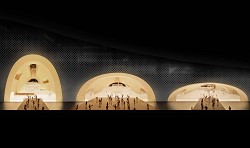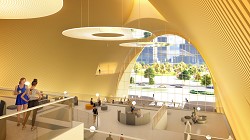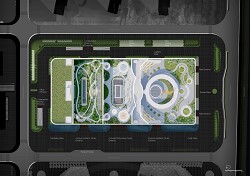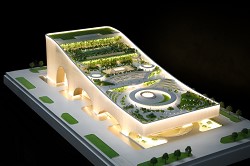|
|||
| ZHUHAI | <Search <Archives <eBulletin | ||
June 6, 2023 Hengqin Culture & Art Complex Yunchao Xu/Atelier Apeiron unveil its work in progress on the 142,560 sq m Hengqin Culture & Art Complex, a future community focal point in one of China's fastest growing cities destined to serve the entire Guangdong-Hong Kong-Macao Greater Bay Area. Six years into the planning, design, and construction of the new complex, Yunchao Xu/Atelier Apeiron’s work is approaching its final stages. In 2018, Atelier Apeiron won a competition launched by the Chinese government to field proposals for building the Hengqin Culture & Art Complex as part of a vibrant new community in China’s third-fastest growing urban center after Hong Kong and Macao. The firm’s winning proposal centered around its embrace of a new and innovative approach to the massive nine-block development.
The unique setting of the Hengqin Culture & Art Complex was not without its challenges. The region's status as a typhoon-prone area in summer was a challenge requiring special considerations, including numerous wind-resistant material comparisons before deciding upon a light and flexible suspended glass curtain wall as a particularly efficient solution. Another challenging element was how to introduce natural light into such large volumes.
Being on an island with a sub-tropic climate, the foundations of the expansive complex also presented a challenge, with a natural layer of silt that can cause stability issues. In response, the firm designed a basement as a sealed support space with anchor points to ensure maximum strength throughout the structure.
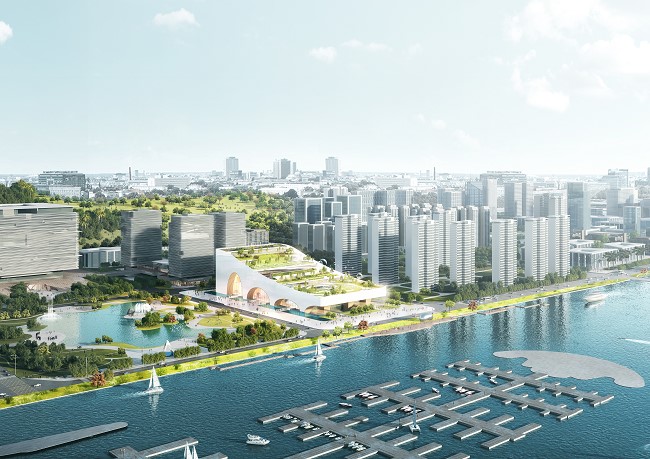 The site of the Hengqin Culture & Art Complex is wedged between existing residential towers and an open city park, and Atelier Apeiron devised a strategy for creating an energetic complex capable of accommodating a multifunctional future. As part of that strategy, the firm espoused an architectural approach defined by large-scale porosity, adapted to the high-density urban context of the site’s surroundings.
On the lower level of the complex, Apeiron is applying a geometric concept of inverted catenary to create three magnificent arches of differing shapes, articulating an architectural language that combines Chinese and Western elements. Each arch serves as a gateway to a different hall that is unique in both character and program. To draw natural light into the inherently dark spaces, the firm cut a skylight above the arches to form connections with the rooftop gardens, and also incorporated two diffuse reflectors that direct soft sunlight into the rooms.
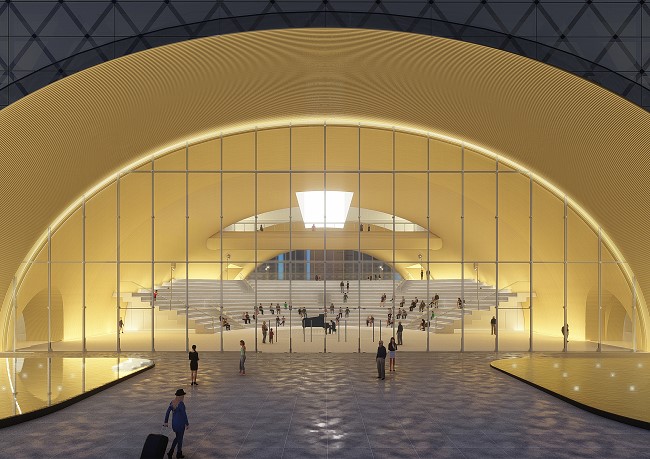 Performance Hall
Composed of wood and bamboo panels, the arched provide a window of transparency between the facility and its surrounding urban life. By day, visitors will enjoy unobstructed external views of the adjacent park, while nights will be illuminated by the soft lighting emitted by the transparent arched halls, forming a stage background for a variety of public events to be held in the park.
Above the archways, modular space units have been integrated into the design to ensure maximum flexibility options for a wide variety of future programs. Additionally, small spaces have been integrated into the arch joints to house equipment and building services.
With the massive complex designed to house nine distinct functions - a library, an archives center, a concert hall, a cultural center, an art gallery, a science museum, a women and children’s activity center, an elderly activity center, and a youth activity center - Yunchao Xu/Atelier Apeiron endeavored to desegregate the experience in order to create a truly communal sense of being. Designed as three urban living rooms, each arch leads into a unique space, comprising a Knowledge Hall, a Performance Hall, and an Exhibition Hall.
In designing the Knowledge Hall, the firm drew inspiration from the Oodi library in Finland, where the function of the library has progressed beyond being just a space for reading services. Taking the concept of traditional libraries to new heights, the Knowledge Hall will feature a vertical village of crystal book blocks and will become a focal point of urban public activity.
The adjacent Performance Hall serves as a cultural performing arts center, with a large open stage and black box theater designed for productions of dance, music, theater, and opera. Finally, the Exhibition Hall is defined by its porous space, where strategically placed ‘cheese holes’ invite scatters of mysterious natural light into a space conceived as a host venue for exhibitions of art and science. Together, the three halls offer visitors a range of parallel world experiences, all within the confines of a single complex.
With its inspirations often derived from nature, the architect has incorporated natural prototypes into its design of the Hengqin Culture & Art Complex, including terraces, caves, and cliffs. A stacked, four-story arrangement of rooftop platforms provides stunning public views from serene environments, with living green balconies overlapping the urban structure like park settings for hosting community-based events. In designing the gardens, the firm conducted multiple studies to ensure optimal sightlines from each of the platforms.
Extending from a hill to the north, to a river to the south, the catenary curve of the Hengqin Culture & Art Complex has created a new skyline landmark. Construction is scheduled for completion in 2024.
(Source: V2COM)
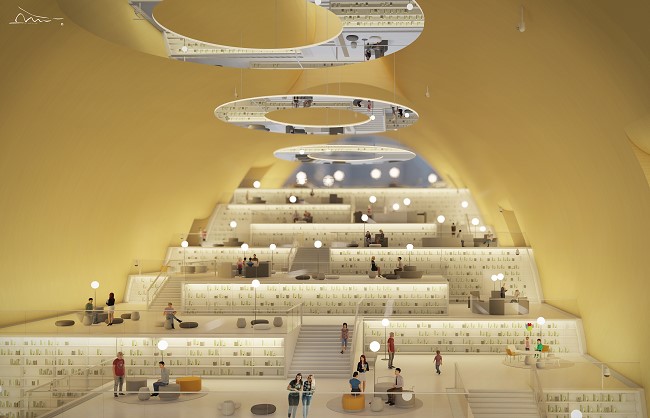 Library
Technical sheet
Project Name: Hengqin Culture & Art Complex
Location: Hengqin island, China (Guangdong-Macau In-Depth Cooperation Zone)
Client: Zhuhai Gree Construction Investment Co Ltd
Architecture Firm: Yunchao Xu/Atelier Apeiron
Project Start: 2018
Project Completion: 2024
Total area: 142,560 sq m (1,534,503 pi2)
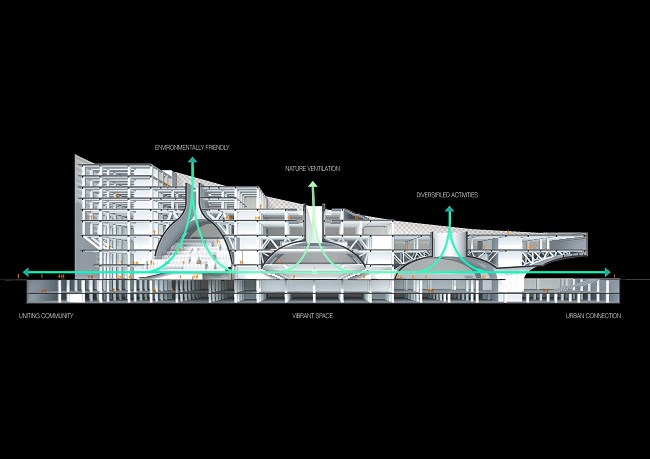 |
|
|
